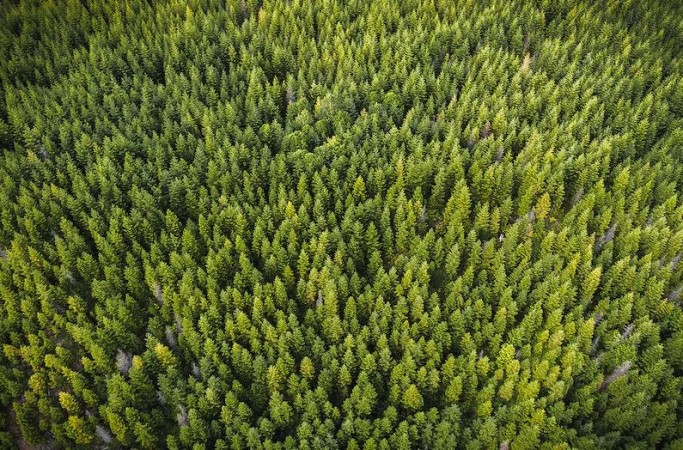
Deforestation, the widespread removal of forests, is a pressing global environmental issue that poses significant threats to biodiversity, climate stability, and human livelihoods. In response to this crisis, the concept of reforestation has emerged as a vital solution to counteract deforestation's adverse effects. Reforestation involves the deliberate planting of trees and the restoration of degraded ecosystems. This article delves into the role of reforestation in combating deforestation, exploring its environmental, social, and economic benefits, while also acknowledging the challenges faced in implementing successful reforestation initiatives.
Understanding Deforestation and Its Impact
Definition of Deforestation
Deforestation refers to the clearance or removal of forested areas, primarily for agriculture, urban development, logging, and infrastructure expansion. This widespread practice disrupts the natural balance and ecosystems, leading to adverse consequences.
Causes of Deforestation
The primary causes of deforestation include agricultural expansion, logging for timber and paper products, mining activities, and urbanization. These human activities contribute to the loss of forest cover and the destruction of wildlife habitats.
Environmental Consequences of Deforestation
The environmental impacts of deforestation are far-reaching. It leads to habitat loss, soil degradation, increased greenhouse gas emissions, and disrupts the water cycle. Deforestation also contributes to climate change, biodiversity loss, and extreme weather events.
What is Reforestation?
Definition of Reforestation
Reforestation involves the active restoration of forests on land that was previously forested but has been deforested or degraded. It aims to replenish tree cover and restore ecosystems to their natural state.
Importance of Reforestation
Reforestation plays a crucial role in mitigating the adverse effects of deforestation. By planting trees, we can sequester carbon, conserve biodiversity, protect soil, and regulate the climate.
Reforestation Techniques and Strategies
Afforestation vs. Reforestation
Afforestation refers to the process of planting trees on land that has not been forested for a long time. In contrast, reforestation focuses on restoring forests on land that was previously forested but lost its tree cover.
Natural Regeneration
Natural regeneration involves allowing forests to regrow naturally without human intervention. It is suitable for areas with viable seed sources and minimal disturbance.
Assisted Regeneration
Assisted regeneration involves providing some level of intervention, such as controlling invasive species and protecting young trees, to facilitate the natural regrowth process.
Tree-Planting Programs
Tree-planting programs involve the deliberate planting of trees by individuals, communities, governments, or organizations to restore degraded landscapes.
Environmental Benefits of Reforestation
Carbon Sequestration
Trees act as carbon sinks, absorbing carbon dioxide from the atmosphere during photosynthesis and storing it as carbon in their biomass. Reforestation significantly contributes to carbon sequestration, thus helping combat climate change.
Biodiversity Conservation
Reforestation provides habitats for various plant and animal species, contributing to biodiversity conservation. Restored forests support a wide array of flora and fauna, promoting ecosystem stability.
Soil Protection and Erosion Control
Tree roots help bind soil particles together, preventing erosion and soil degradation. Reforestation reduces the risk of landslides and protects water sources.
Social and Economic Benefits of Reforestation
Community Development
Reforestation projects often involve local communities, providing them with opportunities for economic growth and sustainable livelihoods.
Employment Opportunities
Reforestation initiatives create jobs in tree planting, forest management, and related industries, contributing to local economies.
Sustainable Resource Management
Reforestation encourages sustainable use of forest resources, such as timber, fruits, nuts, and medicinal plants, ensuring their availability for future generations.
Reforestation Projects and Success Stories
The Great Green Wall Initiative
The Great Green Wall is an ambitious project in Africa aimed at combating desertification by planting a massive belt of trees across the Sahel region.
Eden Reforestation Projects
Eden Reforestation Projects is a non-profit organization that focuses on reforestation efforts in various countries, employing local communities in the tree-planting process.
Reforestation Efforts in Brazil's Amazon Rainforest
Brazil has implemented several reforestation projects to restore parts of the Amazon Rainforest that have been affected by deforestation.
Challenges and Limitations of Reforestation
Land and Resource Constraints
Finding suitable land and resources for reforestation projects can be challenging, particularly in densely populated areas.
Monitoring and Maintenance
Maintaining reforested areas requires ongoing monitoring and care to ensure successful ecosystem restoration.
Long-term Sustainability
Reforestation projects must prioritize long-term sustainability to avoid potential setbacks and ensure the survival of newly planted trees.
The Role of Technology in Reforestation
Drones and Satellite Imaging
Modern technologies like drones and satellite imaging aid in surveying and mapping large areas for reforestation efforts.
AI and Machine Learning
Artificial intelligence and machine learning can analyze vast datasets to optimize tree planting strategies and species selection.
Smart Reforestation Systems
Innovative systems that combine sensor technology and real-time data analysis help monitor and manage reforested areas efficiently.
Collaborative Efforts and Global Initiatives
Government Involvement
Governments play a crucial role in supporting reforestation initiatives through policy development, funding, and regulation.
NGO and Private Sector Partnerships
Collaborations between non-governmental organizations and the private sector enhance the scale and impact of reforestation projects.
International Cooperation
Global cooperation and partnerships are essential in addressing deforestation and promoting reforestation on a larger scale.
The Future of Reforestation and Deforestation
Climate Change and Reforestation
Reforestation will continue to play a significant role in combating climate change and its effects on ecosystems.
Balancing Conservation and Development
Finding a balance between conservation efforts and sustainable development is crucial for successful reforestation.
Education and Awareness
Raising awareness about the importance of reforestation and its benefits will drive greater support for these initiatives.
Reforestation is a powerful tool in combating deforestation and its adverse effects. Through strategic planning, collaboration, and the implementation of innovative technologies, we can restore our forests, protect biodiversity, and combat climate change. Embracing reforestation as a collective global effort will contribute to a greener and more sustainable future.
Discovering the Future of Social Media: The Latest Platforms Making Wave
Empowering Your Mindset: 15 Tips for Personal Growth
E-Commerce Explosion: How Online Shopping Is Revolutionizing Retail